
Hello Friends Steemian wherever you are, best regards to you all.
It's nice to be back in Week 5, with another useful theme. This week's lesson is about a physical therapy intervention: Plantar Fasciitis, which I found very helpful and enjoyed reading and trying.
It's nice to be back in Week 5, with another useful theme. This week's lesson is about a physical therapy intervention: Plantar Fasciitis, which I found very helpful and enjoyed reading and trying.
Homework Task
| What's Plantar Fasciitis? Write in your own words after getting knowledge from the lesson post. |
|---|
After reading and learning from the lesson post, I can conclude that Plantar Fasciitis is a condition that causes inflammation of Plantar Fasciitis, which triggers the destruction of tissue bands along the soles of the feet. This condition often occurs in women and athletes, due to standing too long while doing something, due to homework, or other strenuous exercise.
If reviewed further, many things cause Plantar Fasciitis, some of which are as follows :
- Excessive use or repeated pressure on the plantar fascia.
- Osteoarthritis or age factor.
- Overweight is often called obesity.
- Agronomy or poor foot mechanics.
- Due to other diseases such as arthritis, and diabetes mellitus.
- Use of shoes that are not good, such as not supporting the soles of the feet properly.
- Sports that utilize heels and soles of the feet for a long time.
If the causes are often done and occur, then the symptoms of Plantar Fasciitis will arise. Among the common symptoms experienced are the following :
- Patients with plantar fasciitis feel heel pain along the arch of the sole.
- Patients with plantar fasciitis will feel stiffness or pain in the morning on the part.
- Under certain conditions, patients with plantar fasciitis will experience swelling of the soles of the feet, which will be accompanied by difficulty walking or standing due to inflamed soles of the feet.
| How would you diagnose a plantar fasciitis? Any clinical investigation or assessment tests? |
|---|
When diagnosing plantar fasciitis, we must first understand that plantar fasciitis has two types.
- Acute Plantar Fasciitis: often caused by sudden overuse and usually pain will be felt in less than a month or can be even faster.
- Chronic Plantar Fasciitis: pain that is experienced continuously, especially when doing strenuous activities, and can result in long-term stress.
Once we know about what is plantar fasciitis, the causes of plantar fasciitis, symptoms of plantar fasciitis, and types of plantar fasciitis. Then we can diagnose plantar fasciitis.
 | 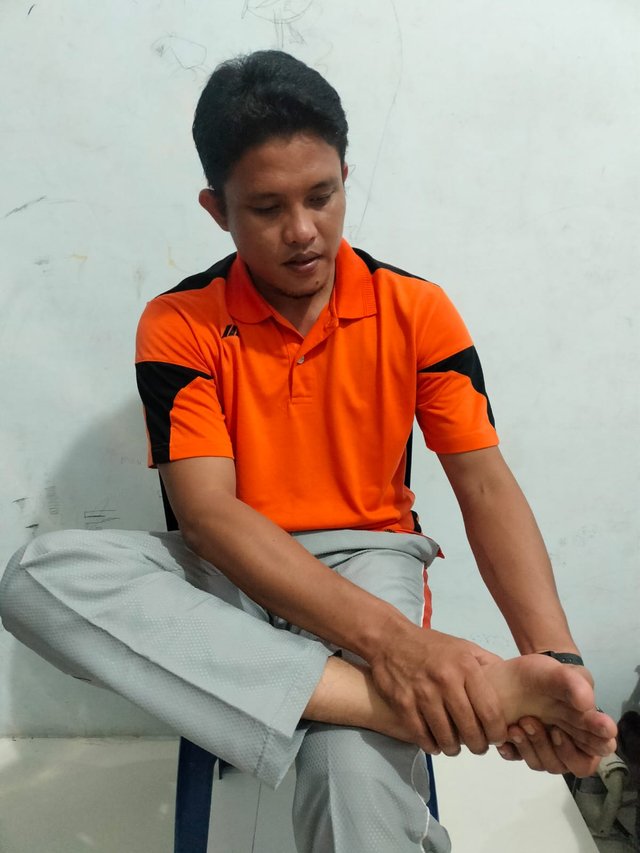 |
|---|
In general, for the Diagnosis of plantar fasciitis, it can be done by several methods. As far as the information from the lessons I got, the common that is often used is to do imaging tests in this case are such as :
- X-Rays. It aims to examine in depth the excessive bone growth.
- MRI can also be done. It is useful to assess the affected ligaments or muscles.
Another diagnosis is to perform a physical examination, as well as taking a previous medical history of the patient, this is necessary to confirm the diagnosis made to the patient.
Another way to diagnose plantar fasciitis is to perform other specific tests. Like :
- Ankle dorsiflexion test, aims to assess the mobility of the ankle joint.
- Big toe extension test, this is done to assess the limitation of mobility of the big toe.
- By palpating the heel area, this is necessary to assess the degree of pain and inflammation in plantar fasciitis.
| Try to practice at least 3 exercises that you have learned from the lesson. Share images, gifs or videos while practising. |
|---|
| Rolling Frozen Ball |
| - |
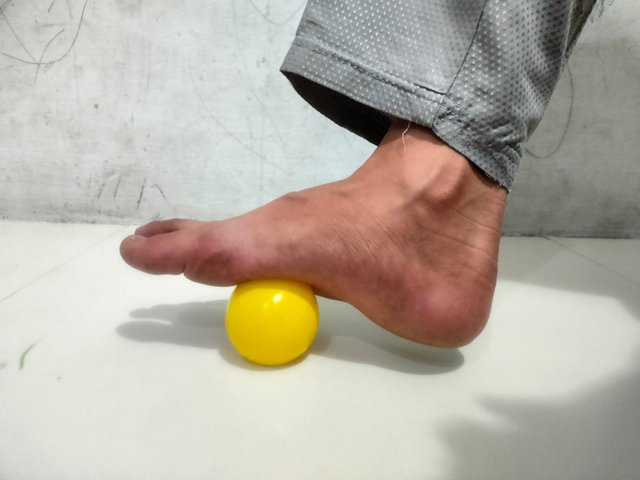
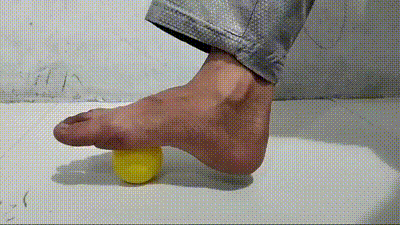
| Heel Raise Exercise |
|---|
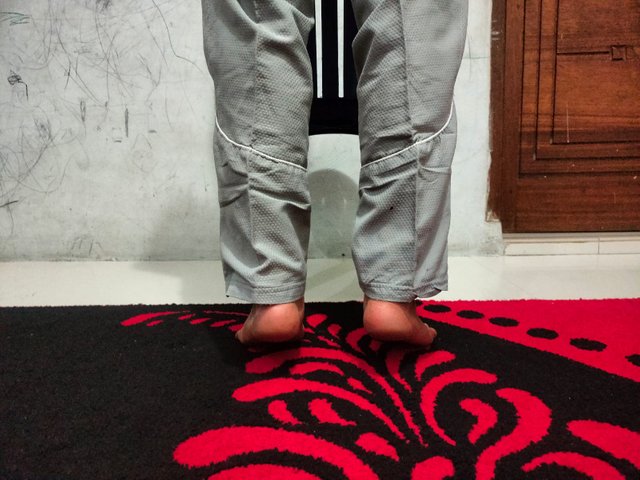
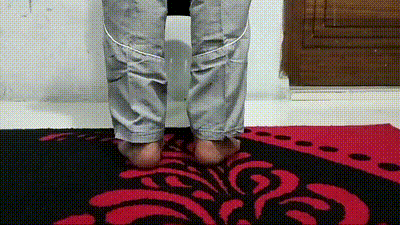
| Calf Stretch |
|---|
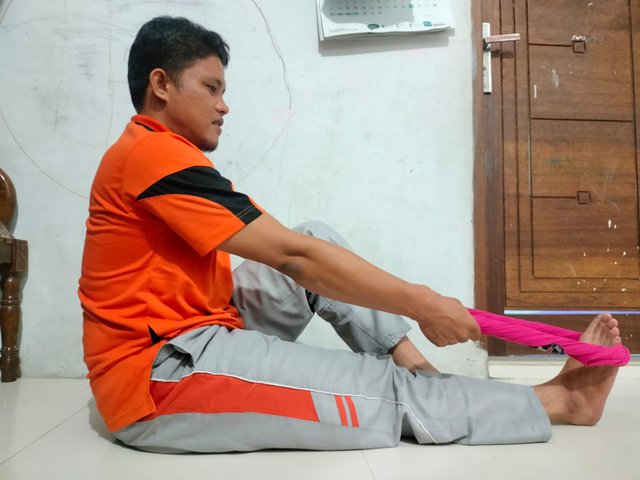
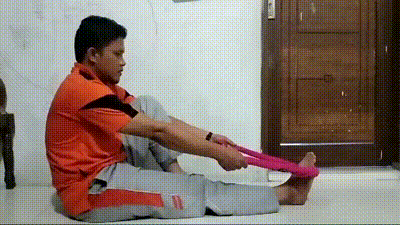
| Share your review after performing these exercises either on yourself, healthy individual or patient. |
|---|
I try to do this exercise to myself, This is to feel what effect arises by doing 3 movements of the exercise. Honestly, this is probably the first time for me to do those 3 exercises, and it's great to be able to learn to do useful things like this.
The following is my review of all three exercises as a way of coping with and reducing Plantar Fasciitis pain.
Rolling Frozen Ball / Bottle
I do this easily, but because I want to get good results I do it seriously. When doing this I felt a little ticklish of course, but the more moved there was a relaxing sensation that I felt on the legs, the body was spoiled by something. I think it's like relaxation therapy that makes the leg-to-thigh area feel very comfortable.
Heel Lifting Exercises
For the second exercise, similar to the frozen ball/bottle rolling exercise, this is very easy to do. When doing this movement there will be a sense where the calf muscles are like going up and down, it's like stretching and it's very comfortable for me to do. Holding it for 5 to 10 seconds makes me very relaxed when my feet are placed back on the floor slowly.
Calf Stretch
This simple movement needs to be done carefully in my opinion, this will have a pull of the calf muscles to the thigh muscles. Too long holding this movement there will be a slight stinging on the back of the knee, this may be a stretch that will prevent a person from injury and also help strain the muscles.
So my simple post on this occasion, I invite @simonnwigwe, @pandora2010, @wilmer1988, and @radjasalman, best regards to all of you. See you later and thank you.
| Period | 29 August to 29 November 2024 |
|---|---|
| Transfer to Vesting | 1,927.29 Steem |
| Cash Out | 0 Steem |
| Result | Club100 |
| CSI | 14.9 (0.00 % self, 84 upvotes, 67 accounts, last 7d) |

Reading the post it seems that it can be beneficial not only for patients but also for healthy people. Exercises are great. Good luck for the contest.
Downvoting a post can decrease pending rewards and make it less visible. Common reasons:
Submit
Thank you for understanding the lesson and sharing your assignment; I hope that you will enjoy this week's lesson and try to implement it in your life if you see any such case.
Observations
Task 1 (2.7/3)
You have shared a great knowledge about plantar fasciitis, it's symptoms, causes, but you didn't add it's types. It's plantar fascia inflammation not plantar fasciitis re-read before posting. I appreciate your effort.
Task 2 (3/3)
In the second question, you tell us about how you have to assess a patient by doing physical examination and history taking, performing investigations and specialized tests. It would be better if you add types in first question instead of question 2. Excellent.
Task 3 (3.8/4)
You try the calf stretch, ball rolling and heel raise. You did the calf stretch and heel raise correctly. But in ball rolling you have to roll the ball on all sole of the foot not on a specific area. Always remember to cold therapy & rest is the best therapy in the treatment of plantar fasciitis. I appreciate your efforts.
Overall you made a great attempt to answer all the questions. I appreciate your efforts. But next time try to avoid the above written suggestions. Keep learning and try to implement your knowledge to the people suffering from plantar fasciitis or any type of heel pain. Thank you.
Downvoting a post can decrease pending rewards and make it less visible. Common reasons:
Submit